The Wild Horses of the Outer Banks, NC
Colonial Spanish Mustangs of Carova (Outer Banks, NC)
This year's trip to the beaches of the Outer Banks was a little different. We usually spend this time on the southern end of the island but this year, we decided to try the northern end - something we haven't done since our two boys were very little. Two entirely different cultures and experiences. While the southern end of the island is a lot less populated with very few grocery stores and commercial build up, it can be very 'rustic' which is nice. The northern end (while it has its charm) is full of quaint little shops and restaurants, grocery stores and well-managed neighborhoods.
Given that it has been 10 years or more since our last visit, it was like experiencing it for the first time all over again. One of the perks of the northern end is Carova where you need a 4 wheel drive in order to enter the town (if you can call it that). It is literally cut off from civilization for miles with small little clusters of houses that are only available to rent a few months out of the year.
The amazing draw for Carova is not only the 'peaceful' experience but the WILD Colonial Spanish Mustangs! They've been on the Outer Banks for hundreds of years and only recently moved to Carova where they are safe and free to roam on thousands of acres of prestine beaches and habitats.
While we did not rent a house in Carova, we did rent a house very close to the beach access point and instead of driving the beach to Carova (yes, you can still drive on some of the beaches on the Outer Banks!), we went with a guided tour guide that lived in Carova. Visualize a make shift 'safari' vehicle out of a pickup truck with metal benches soldered to the flat bed ;)
Anyway....back to the horses!
The Colonial Spanish Mustangs arrived here in the early 1500's by way of the explorers and colonists of the New World. This has been verified through DNA testing for their lineage.
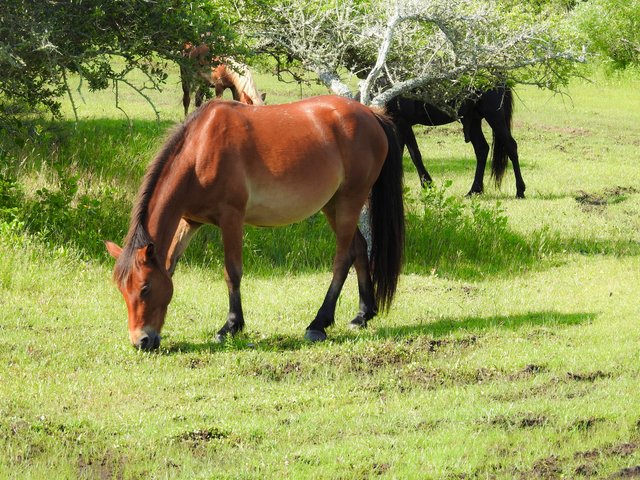
It is no surprise that with such a long history, these horses have played a significant role in the state’s coastal heritage, with thousands of them once roaming the Outer Banks. In fact, residents have long celebrated the horses by erecting statues of them (colorfully painted)from one end of the island to the other.
Due to development, roads and tourism, these once thriving horses have been dwindled down to less than 400 today. In fact, some claim the number is closer to just 100 that have survived. Which is why these guided tours are useful to educate the public about these special breed of horse.
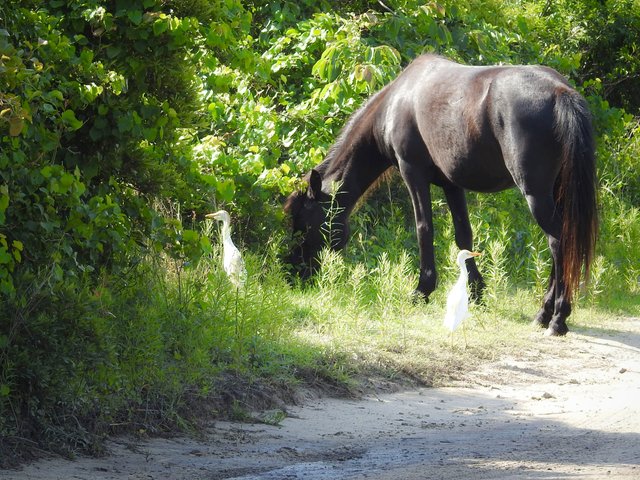
As these horses are 'wild', they are completely on their own and not part of a refuge or sanctuary. Instead, the local residents/community (a handful of families) look out for the horses and will only intervene in very, very special cases. In 2006, the town of Corolla created a non-profit organization called the Corolla Wild Horse Fund which has four full-time and 19 seasonal employees as well as many volunteers to assist in conserving and protecting the horses.
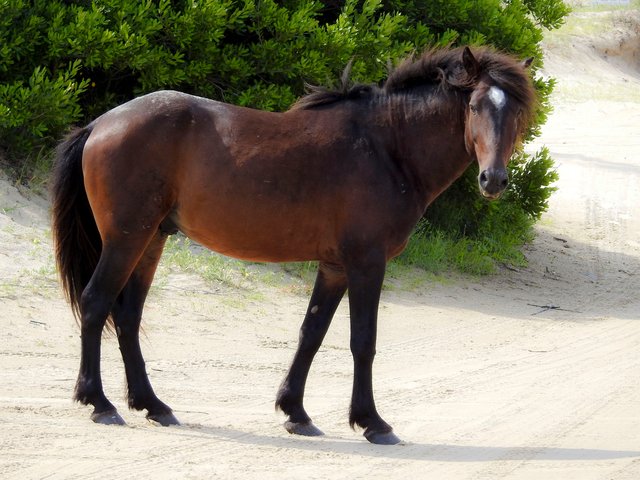
A horse is a horse is a horse....right? No.
What I found interesting is that they have very different digestive systems than our domesticated horses. Which was an important educational fact relayed by our guide. They eat the wild sea grass and the vegetation found in the water canal (man-made and dug out in the 1970's). Anything else, very quickly kills the horse because their digestive tract is not acclimated to other foods. In fact, our guide shared a sad story where one of the horses just died due to being fed 'watermelon'. You would think watermelon would be fine but it is quite deadly to them....as well as apples, carrots and other typical foods people feed domesticated horses.
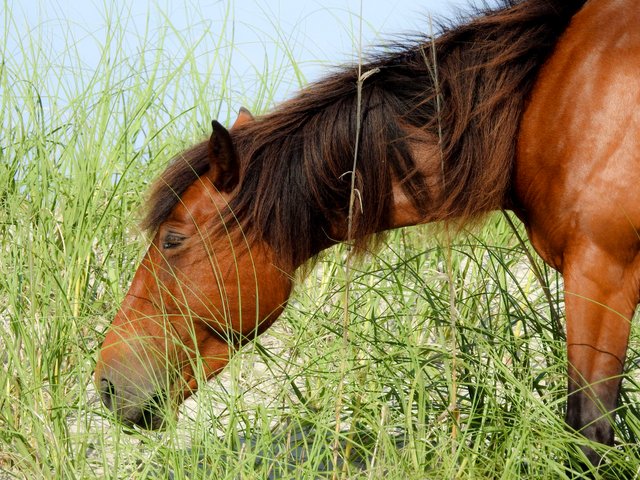
Another interesting piece of information was the difference between wild horses and domesticated horses in their 'herd culture'. Apparently wild horses are very territorial and have alpha males that will kill a baby or other male horse. This also just happened prior to us visiting the horses. Therefore, the horses tend to create 'tribes' and the females 'harems' keeping separate from the males. There was also a case where the horses attacked a visitor's dog because it was barking.
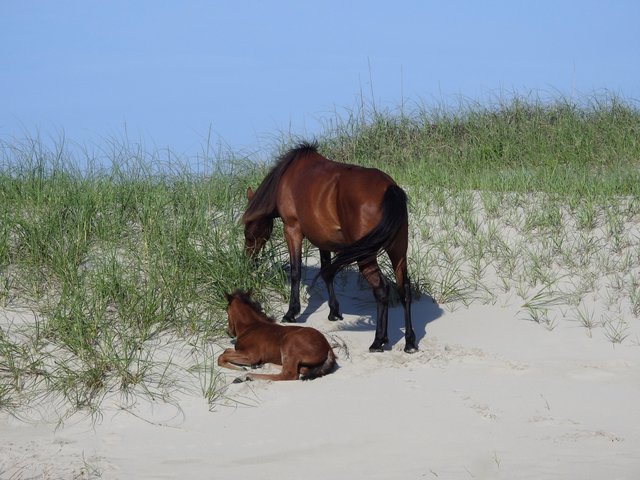
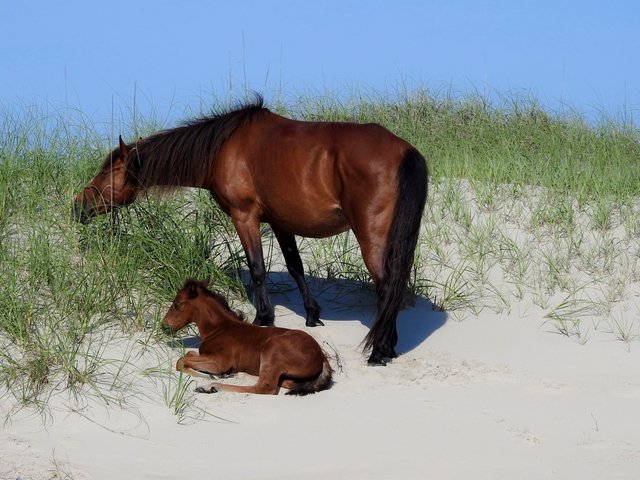
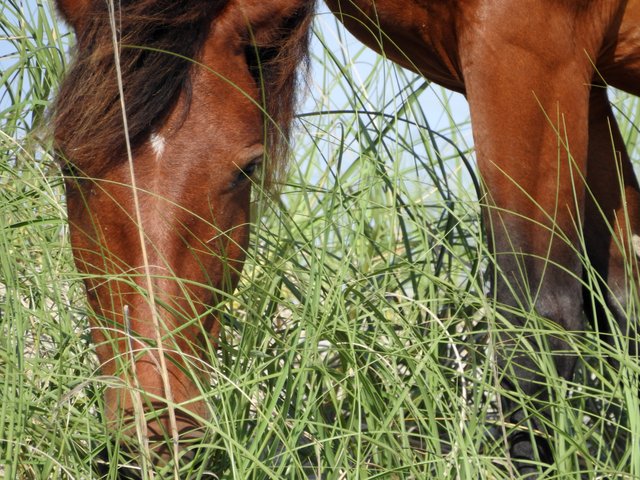
So, as beautiful as these creatures are, they require observing from a 50 foot distance and respected in their natural habitat.
This was truly one of the highlights of our trip. I felt so privileged to have this experience with my family and I do hope that these horses rebound and thrive for hundreds of years to come. It would be so sad if they didn't survive. Their numbers are dangerously low and it is required that they have at least 120 horses to keep the gene pool viable.
We were also gifted with witnessing the miracle of a new baby horse - a male horse. As you can see from the photos, he did have some wounds from an encounter with an adult male already, but survived.
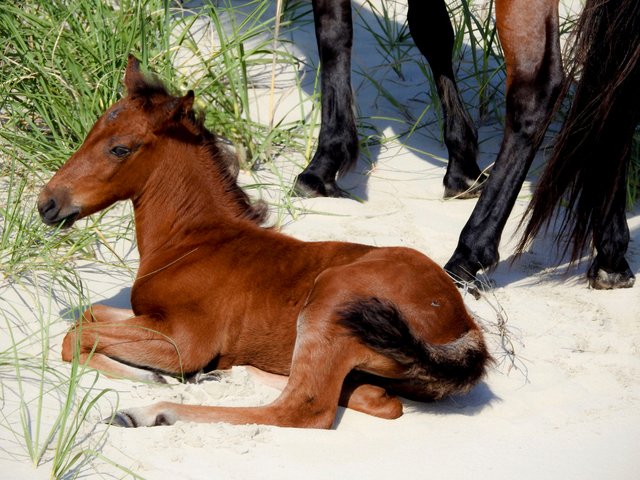
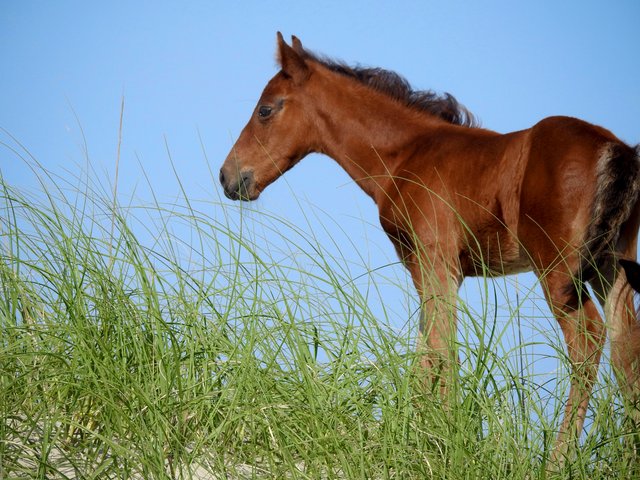
Knowing that their numbers are so low really gave us a different perspective with each tribe we encountered.

Here are some links if you wish to learn more. I highly recommend viewing the video so you can get an idea of how beautiful they are romping around on the beach.
https://www.outerbanks.com/carova.html
To be a part of helping preserve and protect these beautiful creatures from further decline:
Contact: Corolla NC Wild Horse Fund
P.O. Box 361
1129 Carolla Village Road,
Corolla, NC 27927
(252) 453-8002
Website: https://www.corollawildhorses.com/
Good God this post is real worth so much. I want to commend you as its obvious that a lot of work went into it ..@youhavewings. I also find it very surprisingly cos mustangs are just wild horses to me, just the same look if someone tell me that people have a different digestive sytem from cave men ...😂😂😂 . Its educative and i find it worth reviews . jah bless keep it skianking (am in the wind)
Hi @kamiikazer - Thank you. I am glad that you found this post educational. Me, too! I think it's important to learn more about the animals around us...not just from a human perspective. I had no idea about the digestion either and found that very useful and important to know.
All the photos of horses you captured are so beautiful. Indeed horses are amazing creatures. So sorry to hear about the one that was being fed the watermelon. Hope many will be educated so that they know how to take care of horses.
THANK YOU for sharing this beautiful piece.
These horses are beautiful! Thanks for sharing your knowledge on them! :)
I adore horses in general ... but this post really opened up my eyes. I had no clue for the wild horses being that different. What I do know is that horses can be territorial. But that their digestives were so different ... is completely new to me. Thank you for sharing!
Love, love, love this post! I've often wondered about wild horses and had no idea they were so different than domestic ones. Seeing the colt was pretty awesome as well!
Thanks for sharing @youhavewings! Hope you are well :)
The baby was very amazing. All the locals were so excited. Any birth and survival to adulthood is great news.
You've been on my mind lately, Lynn. Hope you are doing well. Sending you both love.
That's funny because you have been on mine too @youhavewings! We are hanging in there still 😂 Thank you❤️
Very nice pictures, looks like a great time, I remember a video from a few years ago about another Island horse band, they were dying off also, and had some really bad hoof problems, I can't remember where other than up near Nova Scotia I think. The horse pictures you got did not see any hoff problems with them, so must be some rocky areas for them to keep them naturally trimmed.
Yes, there are a few areas left where wild horses still roam but the Spanish Mustangs are the last left of this breed. I'm not sure what the other breeds are in other areas. Would be interesting to know. If you look at the photos, you can see how their physiology is much different - the nose for instance doesn't narrow from the head - it's almost like a rectangle - squared off and thick. And their bodies are not as long as other breeds.
When I was in elementary school, my school went to Assateague Island for a week where there were many, many wild horses. Interestingly enough, our tents and food, the garbage cans were raided by the horses every single morning and around dusk. And I interacted with them MUCH ;) LOL They were very sweet and social. I have photos hugging their necks and petting them as they went through the camp garbage. There had to be 20 horses on any given morning - it was amazing.
Reading the article below, it appears that they are given the same cautions about feeding and close contact. I find that so interesting due to my close contact (as a child) with them and their attraction to camper's food/garbage. Many mornings, I woke up to having my tent dismantled by a curious horse looking for food and interaction. They seemed very hardy and I remember them being very fuzzy. I would hope that that innocent view of the horses wasn't at the horses' expense - no one knew at the time, that is for sure.
https://www.nps.gov/asis/learn/nature/horses.htm
No rocks really in the Outer Banks. That is a curious observation, @bashadow. Hmmm I never would have thought of that being a problem - wonder if it is with this community of horses. The guide said nothing about that to us but it is possible that they have problems.
That was a very nice addition to your post, the park link was, surprisingly uncluttered, (you don't find that in many government pages). The Island I was thinking about above is Sable Island, I think but am not positive the Documentary I remember was Chasing Wild Horses, if I am remembering correctly it was a nicely done Video. IMDb and Amazon both gie it 4 stars.
Oh that sounds like the 'perfect' documentary to watch this weekend, thanks so much!
I am going to look at Sable Island, too. We've always wanted to drive up to Maine, might as well hop on over to Nova Scotia ;) I've seen a few short films on the islands around there and Washington State that were very interesting....communities of people and animals removed from common life - I always find these places interesting and refreshing.
I would have never known about their digestive system. That is harsh to only survive on one type of grass. And that is very worrisome if there is only a certain amount in one area. Perhaps that is what's also happening to help keep the numbers low?
Glad to know that there is an organization to help these horses, knowing how destructive humans are, there needs to be good people to help out.
Yes, I found their diet very important to know because I would certainly feed them carrots or the like if someone didn't tell me.
They've been eating this grass for hundreds of years and enjoyed 6000 horses at recorded peak. One thing the guide said about the grasses (because those, too are 'protected') is that these horses don't rip up the grasses at the root, they've adapted to chewing off the ends and grazing. And if you look in the the photos, there are vast areas on the interior land where there is a lot of other vegetation - it is pretty dense actually. As well, the canal that was dug out in the 70's grows a particular plant (I forgot the name and tried to find the name) that the horses just love and is very nutritious for them - they also cool themselves in it. I saw a video on this in my prepping for this post and I will try to include. You can see them foraging 'a lot' and the way they inviting other horses to say hello is just precious :)
Honey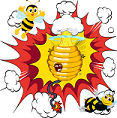 Bomb
Bomb
Thank you for your contribution to the Photocircle tag!
Cheers,
@Photocircle Team
Learn about this photo curation project by clicking >here
This post was shared in the Curation Collective Discord community for curators, and upvoted and resteemed by the @c-squared community account after manual review.